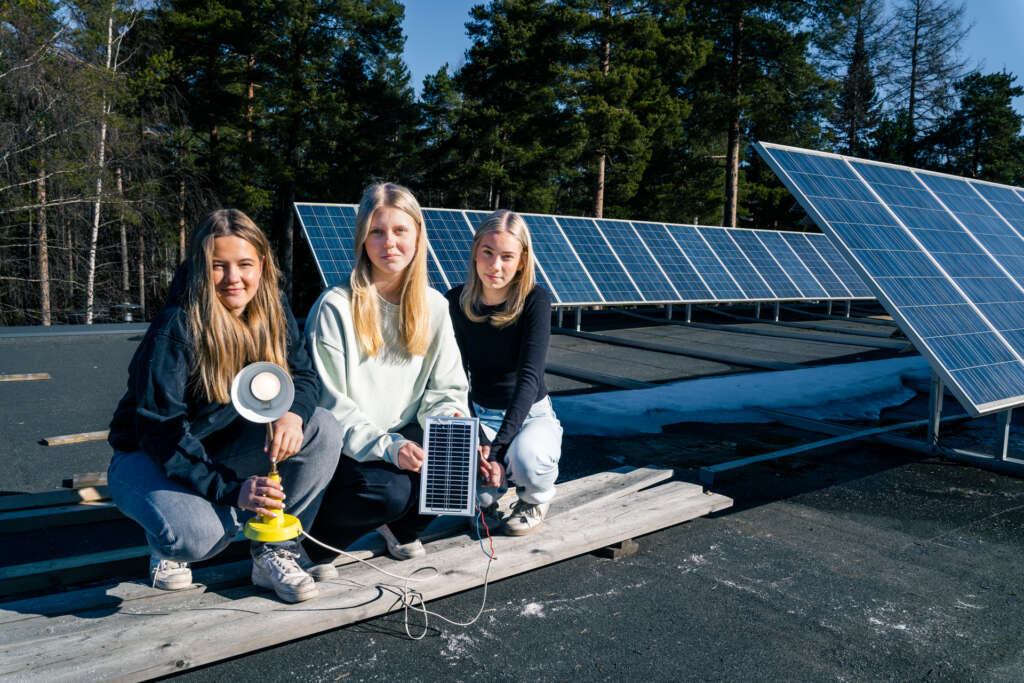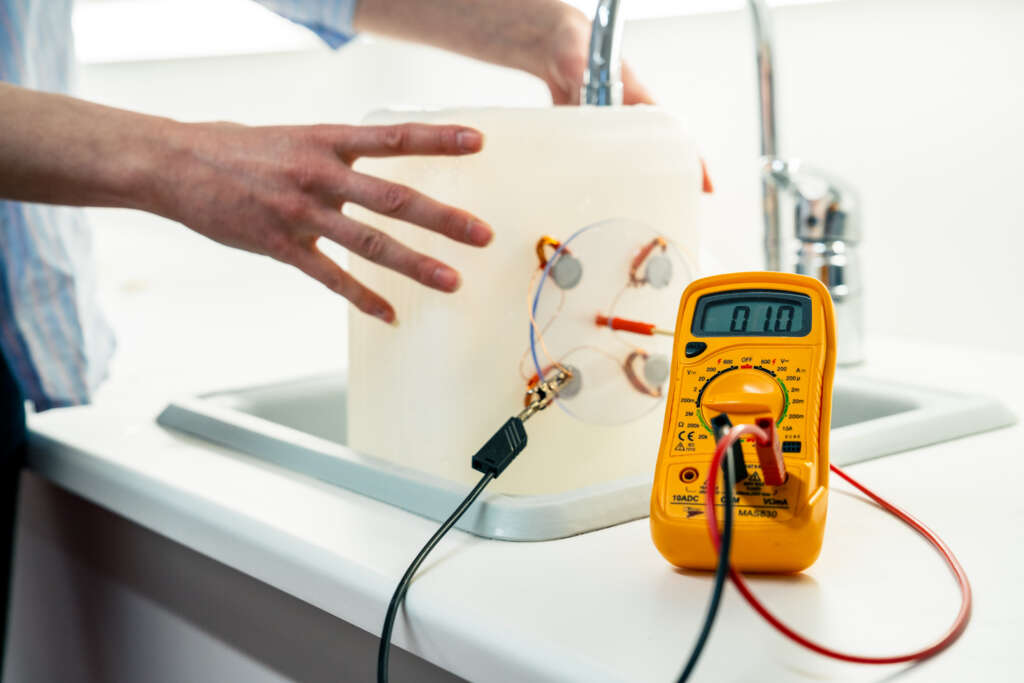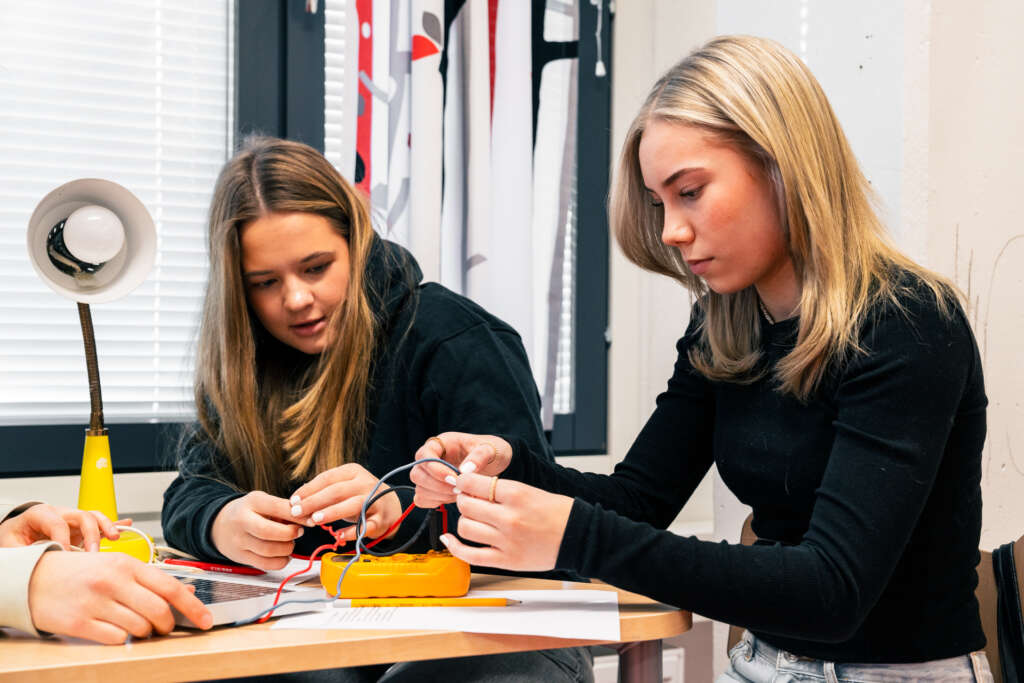
Article categories: Archive News
Now let's make electricity! Ninth-graders produced energy from sun, wind, and water during the theme week
Published: 5.5.2023
How do we use the sun, wind, and water to produce energy? This is what some 150 ninth-graders at Borgaregatans skola in Vaasa got to find out very concretely during the theme week that focused on energy and sustainable development 17—19 April 2023.
The aim of the school’s annual theme week is to raise pupils’ awareness of sustainable development issues, such as producing electricity and heat from renewable resources.
The programme includes a visit to the local electricity company Vaasa Electricity and workshops on solar panels, hydro power, and wind power.
– In a hydropower workshop, ninth-graders worked on their own small hydroelectric power plant using materials such as magnets, copper wire, plastic canisters and wooden spoons. When the hydroelectric power plant gets finished, they will test it under running water and measure how much electricity it produces, says physics and chemistry teacher Jenny Rönnqvist-Norrby.

Solar panels on the school roof
In the wind power workshop, the students designed and assembled their own propeller, or turbine, which used the “wind” generated by a hair dryer to produce electricity.
In the solar power workshop, small solar panels were used to produce energy for a desk lamp and to charge a phone.
A solar power plant with a total of 140 m2 of solar panels was installed on the roof of Borgaregatans skola during the renovation in 2013. These panels generate 15 000 kilowatts per year.
– During the theme week, we also visit the roof with the students to see the larger solar panels and tell them how much energy they produce for the school, says Mats Nyblom, mathematics, physics and chemistry teacher.

The energy education pathway in Vaasa
Vaasa implements an energy education pathway that stretches from early childhood education to higher education. In Vaasa, the energy capital of the North, learners will master the workplace skills and energy know-how of the future.
One of the three main objectives of the City of Vaasa Strategy 2022—2025 is Carbon Neutral Vaasa 202X. The aim is to be the most energy-wise and energy-efficient city in Finland.
